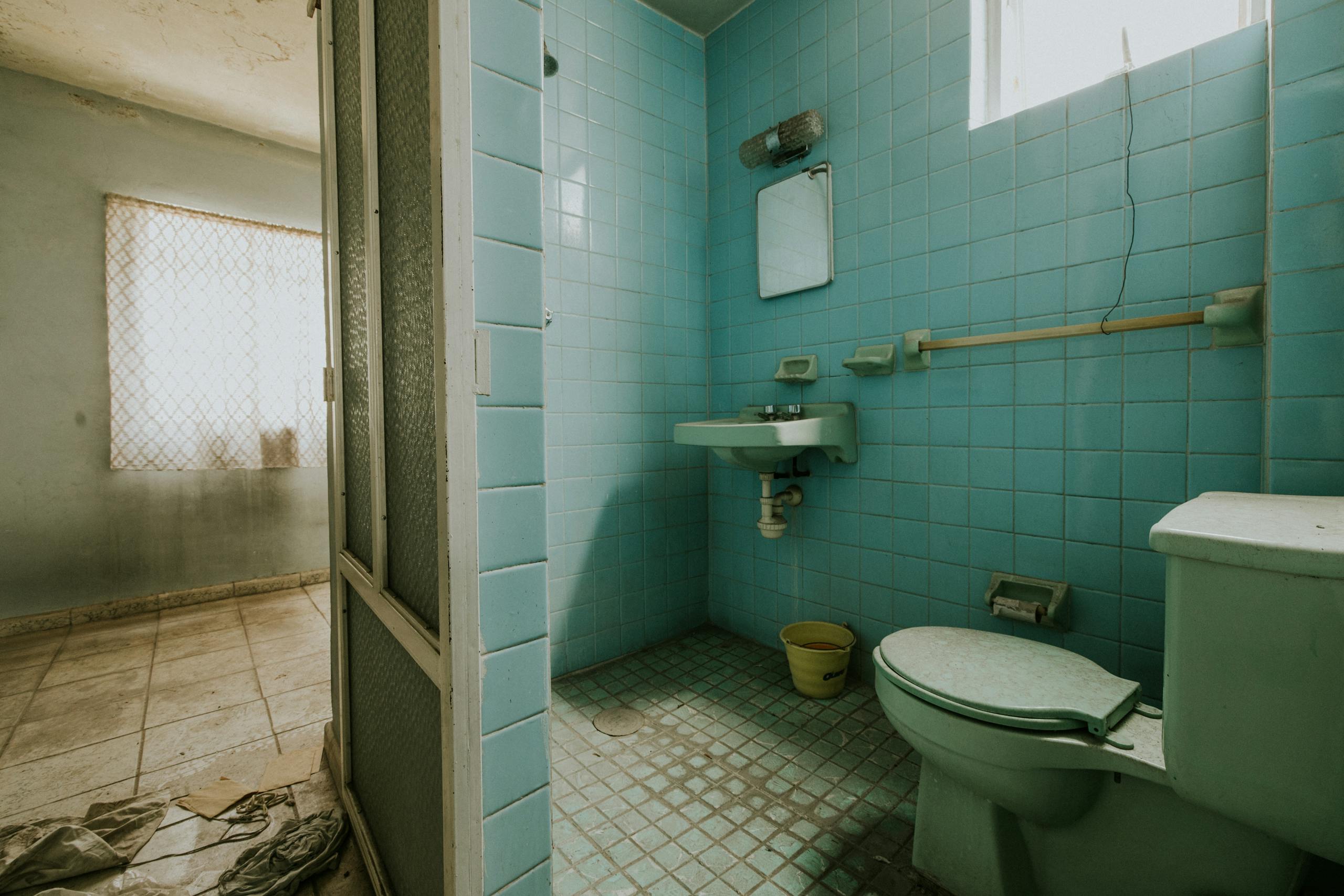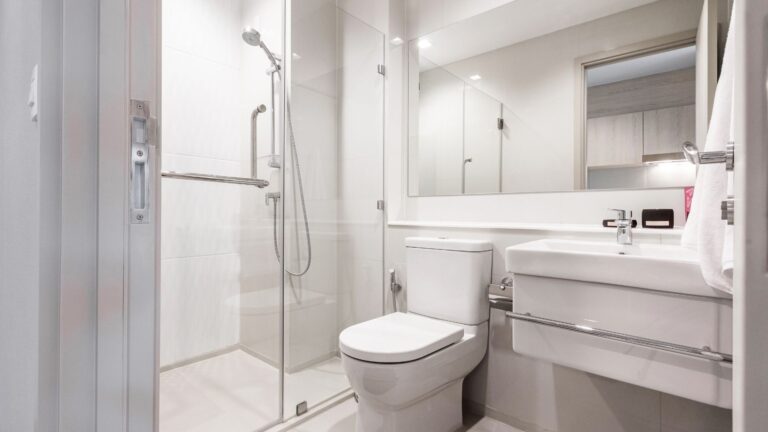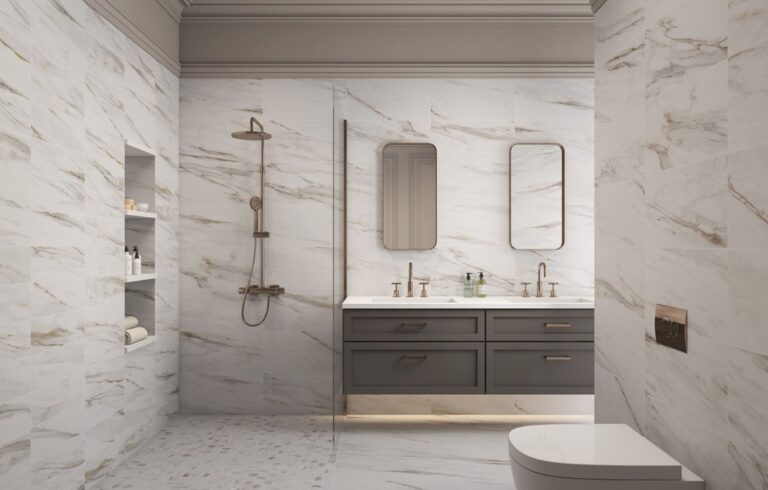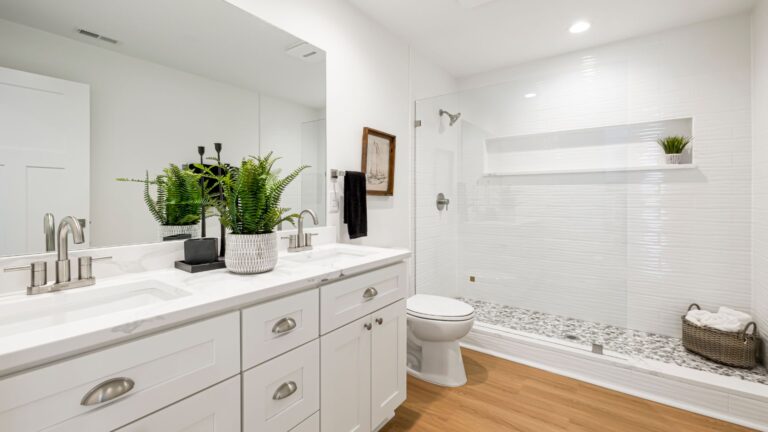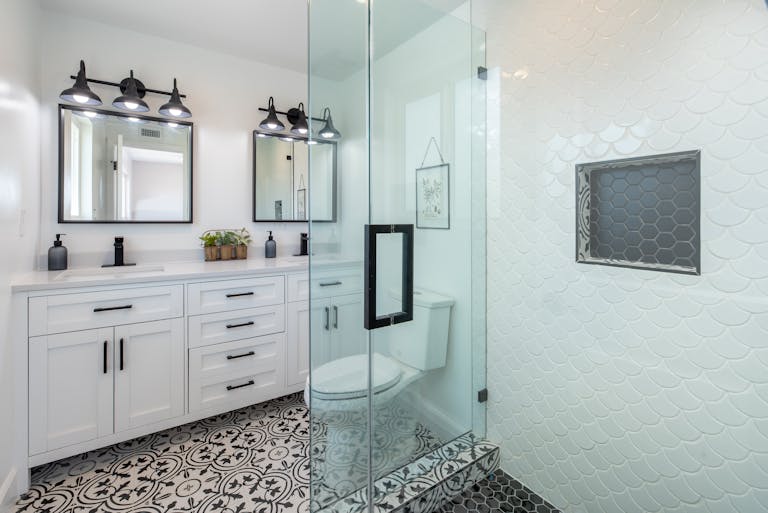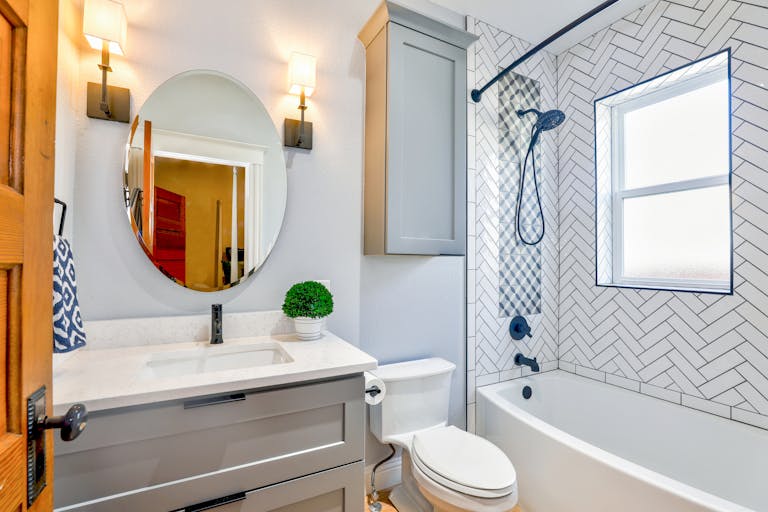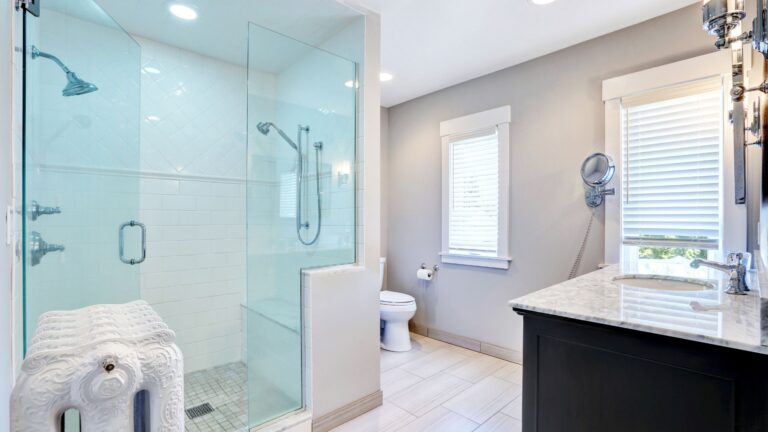Mold and Water Damage Prevention During Bathroom Remodeling
Most homeowners picture gleaming tile, sparkling fixtures, and spa-like comfort when they plan a bathroom remodel, yet few pause to imagine the damp, hidden spaces behind those finishes where mold can spread and wood can rot. Moisture is relentless in a bathroom: steamy showers, splashing sinks, and even the tiniest plumbing drip create a thriving habitat for spores and bacteria. Left unchecked, this moisture can destroy framing, weaken subfloors, and trigger health issues that far outlast that fresh-paint smell. Evergreen Bathroom Remodelers has spent years solving these problems for clients across the Seattle metro, and our team knows that prevention starts long before the first tile is set. This article lays out the most common threats, the health stakes, and the step-by-step methods we use to stop water damage before it starts. Read on to learn how careful planning, proven materials, and expert craftsmanship turn a beautiful makeover into a long-term investment in safety and value for your home.
Why Bathrooms Are Prone to Mold and Water Damage
Every day your bathroom endures more water exposure than any other room in the house, and that consistent humidity creates the ideal breeding ground for mold. Hot showers generate warm vapor that seeps into drywall seams and light-switch boxes, while minor splashes from tubs and vanities sneak beneath baseboards where air circulation is poor. Older tile may have hairline cracks in grout that allow droplets to migrate behind the wall with each rinse, and outdated exhaust fans often lack the power or run-time needed to dry the air fully. Add aging pipes hidden inside walls, and you have a recipe for leaks that remain invisible until stains appear on the ceiling below. Tile backer boards installed decades ago frequently were not moisture-resistant, so any water intrusion compromises structural integrity over time. Together, these factors explain why bathroom remodels are the best moment to strengthen defenses and build in modern waterproofing solutions.
Common Mold and Water Damage Problems in Bathrooms
When homeowners call Evergreen Bathroom Remodelers after discovering mold, they often describe the same set of headaches. The most frequent complaint is a musty odor even after a deep clean, signaling that colonies are growing where cloth and scrub brushes cannot reach. Another warning sign is peeling paint or bubbling wallpaper, evidence that moisture is trapped behind the surface layer. Dark blotches on ceiling drywall beneath the bathroom point to consistent leakage through the floor assembly. We also see swollen door jambs and baseboards where water wicked up from chronic puddles. Left unresolved, these issues evolve into rotted subfloors that flex underfoot, cracked shower pans that leak into joists, and corroded metal fasteners that lose load-bearing strength. Unchecked dampness sets up a vicious cycle: weakened structures allow more water ingress, which in turn accelerates mold growth and wood decay.
- Mold behind drywall or under tile
- Rotten or delaminated subfloor sheathing
- Water stains on ceilings and wall corners
- Persistent mildew odor that returns after cleaning
- Cracked grout or caulking gaps that never stay sealed
- Loose tiles and soft spots around the toilet flange
- Metal rust on framing nails and screws
Health Risks of Mold in Bathrooms
A clean bathroom should be a place of renewal, yet microscopic spores can turn it into a persistent irritant. Mold releases allergens that inflame nasal passages, aggravate asthma, and trigger chronic coughing. Small children, seniors, and anyone with compromised immunity experience these reactions more severely because their bodies struggle to filter contaminants from the air. Certain species emit mycotoxins that cause headaches, fatigue, and skin rashes. The moisture that feeds mold also encourages bacteria, raising the risk of respiratory infections over extended exposure periods. Because bathrooms are small enclosed spaces, airborne spores often reach higher concentrations than in larger rooms, meaning even quick visits can lead to inhalation. Proactive waterproofing during a remodel is therefore a health upgrade as much as a structural safeguard.
How Evergreen Bathroom Remodelers Prevent Mold and Water Damage
Evergreen Bathroom Remodelers approaches every project with a simple mantra: stop water at the source, guide any escaped moisture to a drain, and ventilate the rest. Our first step is a thorough inspection using moisture meters and infrared cameras to locate hidden dampness in framing, subfloors, and insulation. We repair damage before new finishes go up, ensuring a clean slate. Next, we specify only mold-resistant drywall or cement backer board behind wet walls, sealing seams with waterproof membrane tape and polymer-modified thin-set. A liquid waterproofing membrane is rolled over the entire shower enclosure, extending to the ceiling for steam showers, and across the floor to form a continuous pan liner connected to a clamping drain. We prefer epoxy or urethane grout because it repels water, resists stains, and needs no periodic sealing. High-quality silicone caulk bridges all plane changes and fixture edges, remaining flexible despite thermal expansion.
Bulletproofing the plumbing is equally critical. We pressure-test new supply lines at 150 psi for at least two hours before enclosure, and we use quarter-turn shut-offs with stainless braided connectors to minimize failure points. All valves, shower niches, and bench seats are wrapped in vapor-impermeable backer to prevent wicking. On the ventilation side, we install ENERGY STAR-rated exhaust fans sized to at least eight air changes per hour, with humidity-sensing controls that keep running until relative humidity drops below 50 percent. Wherever possible we design for operable windows to provide passive airflow. Finally, our team completes a post-installation inspection with thermal imaging to confirm continuous coverage of waterproofing layers, and we provide homeowners with a maintenance schedule for caulk renewal and fan filter cleaning.
- Mold-resistant drywall or cement board on all wet walls
- Liquid membrane plus seam tape for continuous waterproof shell
- Epoxy grout and 100 percent silicone caulk at corners and fixtures
- Pressure-tested plumbing with stainless connectors
- Humidity-sensing exhaust fans sized for correct CFM
- Infrared verification and homeowner maintenance guide
- Five-year workmanship warranty covering waterproofing integrity
DIY vs Professional Mold Prevention: What You Should Know
Many enthusiastic homeowners believe that setting tile is a straightforward DIY weekend project. The truth is that professional-grade waterproofing demands specialized products, manufacturer-approved methods, and an eye for detail sharpened by experience. A tiny pinhole in a membrane or an uneven shower base slope may remain invisible until moisture builds up behind the wall over months, then suddenly shows as warped trim or toxic black blotches. By the time damage surfaces, repairs often involve demolition that exceeds the original remodel budget. Evergreen Bathroom Remodelers follows strict installation standards and adheres to local building codes that DIY tutorials rarely mention, such as required vapor barriers in exterior walls of humid zones. We carry commercial liability insurance and back our work with documented warranties, giving clients peace of mind that hidden errors are covered. Case studies from our Bellevue portfolio reveal that homeowners who attempted their own waterproofing later paid double to correct failures that professional help would have prevented.
Cost of Water Damage Repair vs Preventive Remodeling
One of the most persuasive arguments for investing in robust waterproofing is the staggering price gap between prevention and cure. Mold remediation companies charge an average of two to three thousand dollars for a standard five-by-eight bathroom, and that fee covers only cleanup, not reconstruction. If dampness spreads beneath flooring or into adjacent rooms, remediation can escalate beyond ten thousand dollars, and insurance policies often exclude coverage if negligence is proven. Add the cost of replacing saturated studs, subfloors, and finishes, and the total can exceed the original remodel quote by a wide margin. In contrast, upgrading to premium membranes, epoxy grout, and smart ventilation typically raises the project cost by less than ten percent. Over the lifespan of the bathroom, energy-efficient fans also reduce utility bills by maintaining a drier indoor environment that needs less air conditioning in summer. Viewed as a long-term investment, preventive measures offer one of the highest returns per dollar in the home improvement market.
Evergreen’s Commitment to Water-Safe Remodeling
Evergreen Bathroom Remodelers is a locally owned company that understands the Pacific Northwest climate, where frequent rain and high indoor humidity place bathrooms under constant moisture stress. Our crews are factory-trained in Schluter, Wedi, and Laticrete waterproofing systems, allowing us to match the right product to each project’s budget and design goals. We document every step with photographs and provide clients with a digital warranty packet that lists serial numbers of installed materials. Transparent communication is at the core of our process: clients receive daily progress updates, moisture test readings, and clear guidance on how to maintain their newly remodeled space. We also schedule a complimentary one-year follow-up inspection to verify that all seals remain intact.
Final Tips for Homeowners Before Starting a Remodel
The most effective bathroom defense starts well before the first demolition swing. Always ask prospective contractors which waterproofing system they use and request proof of manufacturer certification. Insist on mold-resistant drywall or cement board, never standard green board. Verify that the exhaust fan selected meets or exceeds the room’s cubic-feet-per-minute requirement, and make sure it vents outdoors rather than into an attic. Request a written plan for moisture testing both before and after installation, including photographs of membrane coverage. Schedule periodic caulk inspections every six months and plan to replace silicone in high-stress areas every three to five years. Keep a hygrometer on the vanity to monitor humidity levels and run the fan until readings fall below fifty percent after each shower. Finally, document all warranties and store them with appliance manuals for quick reference.
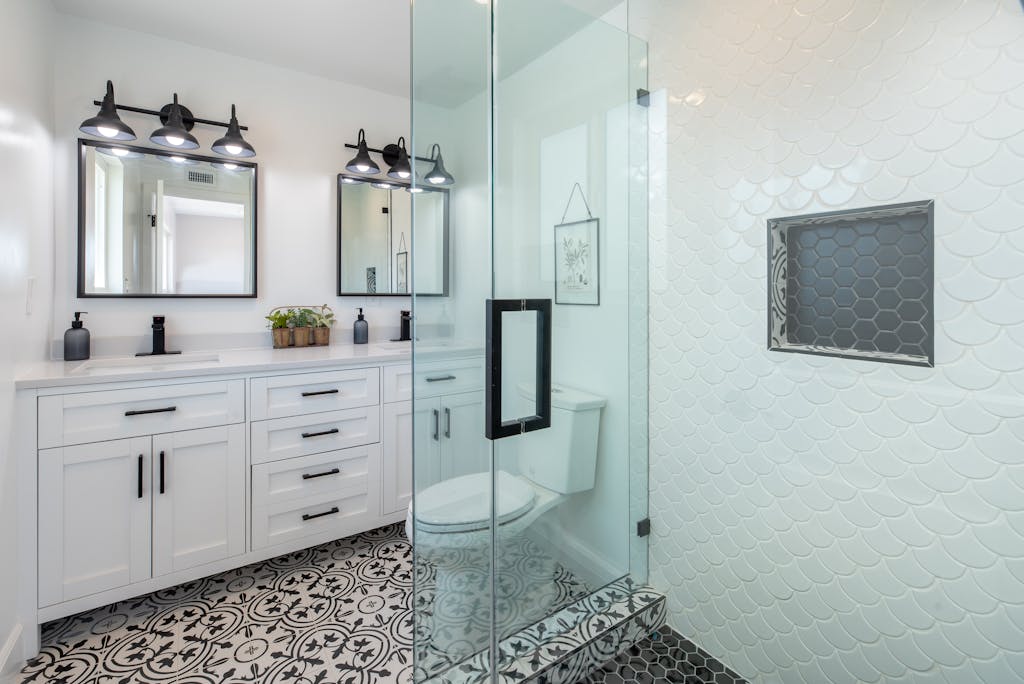
Conclusion
Mold and water damage thrive in the shadows, but thoughtful design and precise workmanship bring these threats into the light and eliminate them. By understanding how moisture infiltrates a bathroom and by choosing proven solutions such as continuous membranes, pressure-tested plumbing, and smart ventilation, homeowners protect their investment and their family’s health. Evergreen Bathroom Remodelers has helped countless Seattle-area residents enjoy beautiful, durable bathrooms that remain dry year after year. If you are planning a remodel and want the peace of mind that comes from professional waterproofing expertise, reach out today for a free consultation and detailed moisture assessment. Your dream bathroom deserves a foundation as solid as its style, and our team is ready to build it with you.
